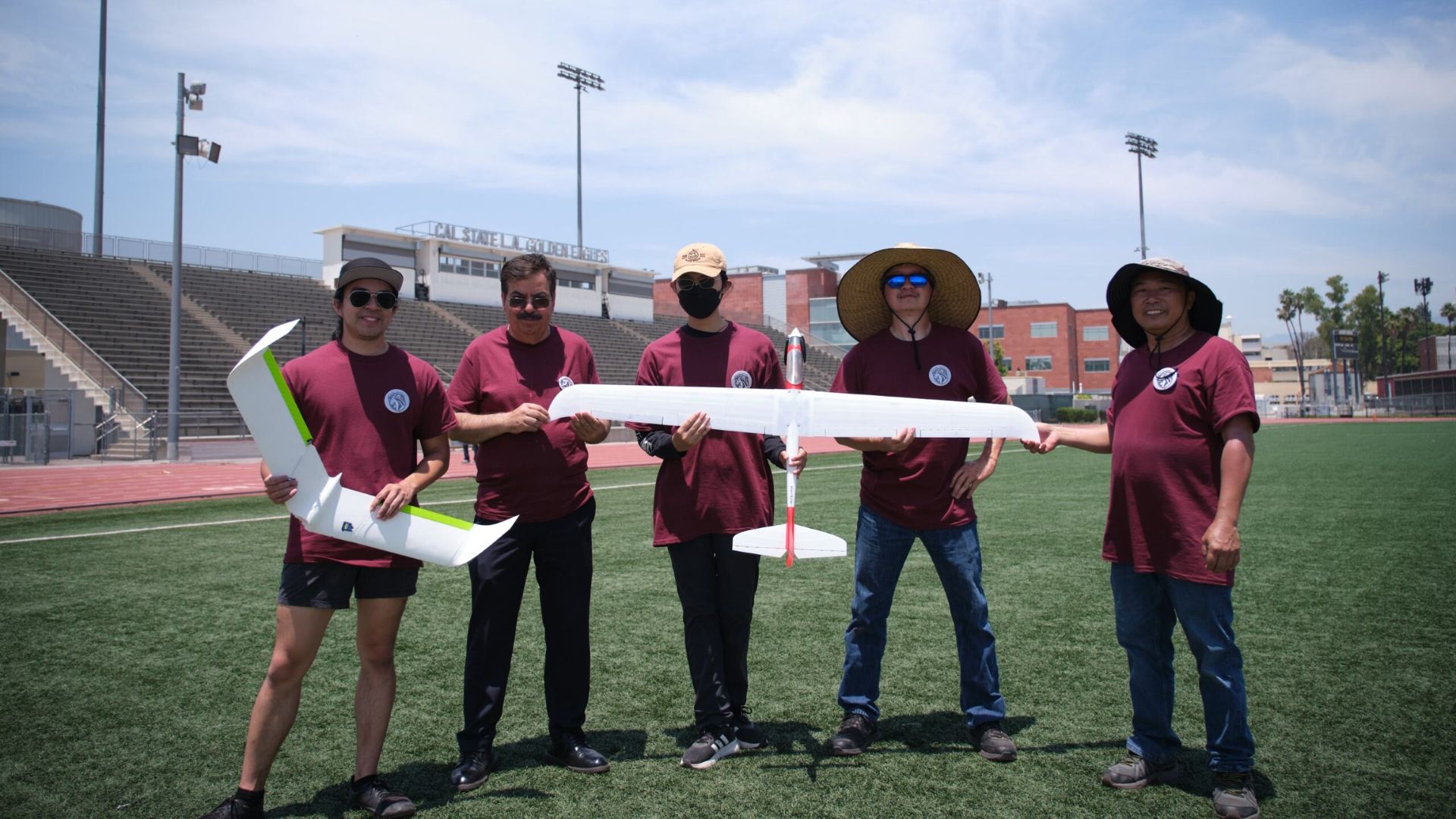Norco College earned a second-place finish in the third annual CSU 3D-Printed Fixed-Wing Aircraft Competition (C-3DPAC), hosted by California State University, Los Angeles (Cal State LA), placing just behind Stanford University in a field of 22 institutions from across California and beyond. The competition took place May 31 at Cal State LA’s Jesse Owens Track and Field Complex and was judged in two categories: flight performance and design creativity.
The Norco team included Ethan Hsu and John Hsu, both majoring in electronics; Darrin Graham, majoring in drafting technologies; and Kristian Damper, a mechanical drafting major. Their achievement highlights the strength of Norco’s career and technical education programs, particularly in electronics, drafting, and engineering technology, and affirms the college’s commitment to providing hands-on learning that prepares students for real-world engineering and manufacturing careers.
C-3DPAC challenges students to design and manufacture fixed-wing aircraft using 3D printing exclusively. Each aircraft must complete a timed flight—eight seconds of powered propulsion followed by a glide phase. Entries are judged on both flight performance and design innovation.
Norco College’s aircraft, a motor-powered glider, stood out for its structural and design ingenuity. It weighed 800 grams and was built entirely from PLA (polylactic acid) and PETG (polyethylene terephthalate glycol) filament, two common 3D printing plastics known for their strength, durability, and ease of use. The aircraft featured a segmented wing assembly joined by dovetail connectors, allowing for modularity and strength. Its most innovative feature was a custom CAD (computer-aided design)-modeled wing section, created with 20–30 micron cuts and a finely tuned slicer resolution. This produced a proprietary infill pattern that enhanced durability and efficiency—so much so that during crash tests, glue joints failed before the wing structure did.
The wing was optimized for “vase mode” slicing, enabling faster and cleaner prints, as well as scalable production. A reinforced trailing edge and interlocking ribs maintained structural integrity without adding significant weight. Team members noted that, with more time, they could have reduced the aircraft’s weight closer to their target of 600 grams.
Preparation for the competition began in August 2024 and continued through the spring semester, mirroring real-world engineering project workflows. The students engaged in intensive CAD, prototyping, and flight testing—developing skills in digital modeling, additive manufacturing, and collaborative problem-solving.
“This year’s competition was highly competitive,” said Dr. Khosrow Rad, assistant professor of electronics and faculty advisor for the project. “I am incredibly proud of our students’ hard work, creativity, and dedication. They demonstrated exceptional skills and teamwork, and their achievement places Norco College among the top performers in the field. Notably, Stanford University won first place, and we are honored to have placed right behind such a prestigious institution. My fellow advisor, Farshid Mirzaei, associate professor of drafting, and I are both incredibly proud of what our students accomplished.”
Competing against institutions like Cal Poly San Luis Obispo, UC Irvine, and Stanford, Norco College demonstrated the strength of its hands-on, application-based education. Achievements like this expand transfer opportunities and open doors for students entering the STEM workforce.
Participation in C-3DPAC also gave students real-world experience in aerospace engineering, systems design, and digital manufacturing—skills increasingly in demand across the engineering and technology sectors.
With this second-place finish, Norco College continues to distinguish itself as a hub for innovative career and technical education.
Watch Norco College’s 3D-Printed Aircraft in Action.
